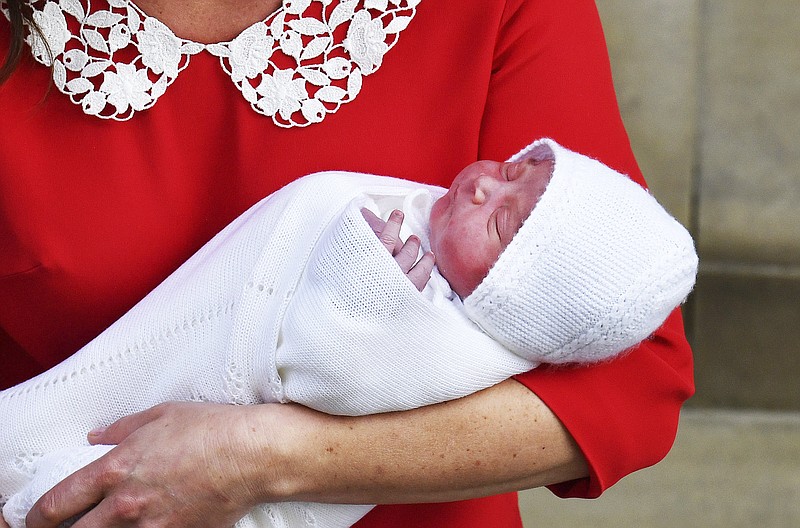By now you may have seen the story of the baby treated with a bottle and a nap in a San Francisco emergency room, then his parents getting an $18,836 bill.
The family, tourists from South Korea, couldn't console the 8-month-old after he tumbled off a bed onto the carpeted hotel room floor. Worried he might have an internal injury, his parents called an ambulance to take them to a hospital.
Doctors at Zuckerberg San Francisco General Hospital quickly pronounced the baby was fine - just a little bruising on his nose and forehead. After his exam, he napped in his mother's arms, sipped on a bottle of baby formula and was discharged.
The child was at the hospital for three hours and 22 minutes, and the bulk of the bill - $15,666 - was dubbed "trauma activation," also known as "a trauma response fee," according to Time.com.
It's an all-too-familiar refrain, these days. But only in America, and made exclusively in America.
Our hospital bills are chock-full of fees like the trauma fee: fees for blood draws, fees for checking the blood oxygen level with a skin probe, fees for putting on a cast, minute-by-minute fees for lying in a recovery room.
These fees don't exist in other countries.
So, surprise surprise! The United States spends vastly more on health care than other industrialized countries - nearly 17 percent of the nation's gross domestic product in 2014, according to a report by the Commonwealth Fund, compared with just 10 percent of GDP in Canada and Britain.
A 2010 study by the Organization for Economic Cooperation and Development found that hospital costs were 60 percent higher in the United States than in 12 other nations. And that cost is passed on to patients, in the form of deductibles, out-of-pocket expenses and soaring insurance premiums.
No, Americans don't drive up the cost by using more medical services. We use far less than people in other countries because we're afraid of the high costs. Our health care is simply more expensive.
Why? We have a middle man gaming the tables among us, our doctors, our hospitals and our drug stores. That middle man is called insurance companies.
Insurers tell us they negotiate costs with networks of hospitals and doctors to get discounts on things like trauma response, putting on a cast, even doctor visits. And it's true that they negotiate costs down. But every negotiation starts with the hospital's gold-plated cost estimate, and how deep the costs are discounted depends entirely on the insurers' clout - better known as its market share of health customers.
Time.com writes: "Comprehensive data from the Health Care Cost Institute shows that the average price health insurers paid hospitals for trauma response (which is often lower than what the hospital charges) was $3,968 in 2016. But hospitals in the lowest 10 percent of prices received an average of $725 - while hospitals in the most expensive 10 percent were paid $13,525. On average, Medicare pays just $957.50 for the fee."
As Vox pointed out last year, conventional wisdom says government programs are more expensive than those in the private market because government can't say no, is corrupt or inefficient. Those are largely myths. Data shows that when America's government-only health programs (like Medicare and Medicaid) are measured against other countries' government programs, we're all about equal. But when America's private market programs (insurance-payer) are measured against the private market programs in other countries, America's private health care tabs are two and three times higher.
One way or another, hospitals and doctors want to ensure they get their costs covered and their budgets made.
Erlanger board members, for instance, are soon expected to approve a proposed fiscal 2019 $1.1 billion budget, the revenues of which must include covering a record-high $120 million in uncompensated care costs.
Why don't lawmakers demand better from our health care system? Because insurers (hospitals and physicians and drug compnaies, too) have discovered it's worth their while, and dollars, to lobby politicians to protect them from cost regulations - or worse, from an industry-squashing single-payer system.
Sure, moving to single-payer would, over time, eliminate lots of insurance industry jobs. But should we have stopped Henry Ford from mass producing Model Ts just so we could protect the workers in the buggy factories and buggy whip shops?
Who we really should protect are ordinary Americans.
A 2017 Kaiser Family Foundation survey found that 43 percent of people with insurance said that they struggled to afford their deductibles. Another 27 percent said that they put off getting care because of cost.
Like Donald Trump said: Who knew health care was so complicated?
But one thing is certain. Too many of our politicians have placed too little value on a big picture that includes our well-being. We need to make sure they know our votes will come to them only for something better - really better.
